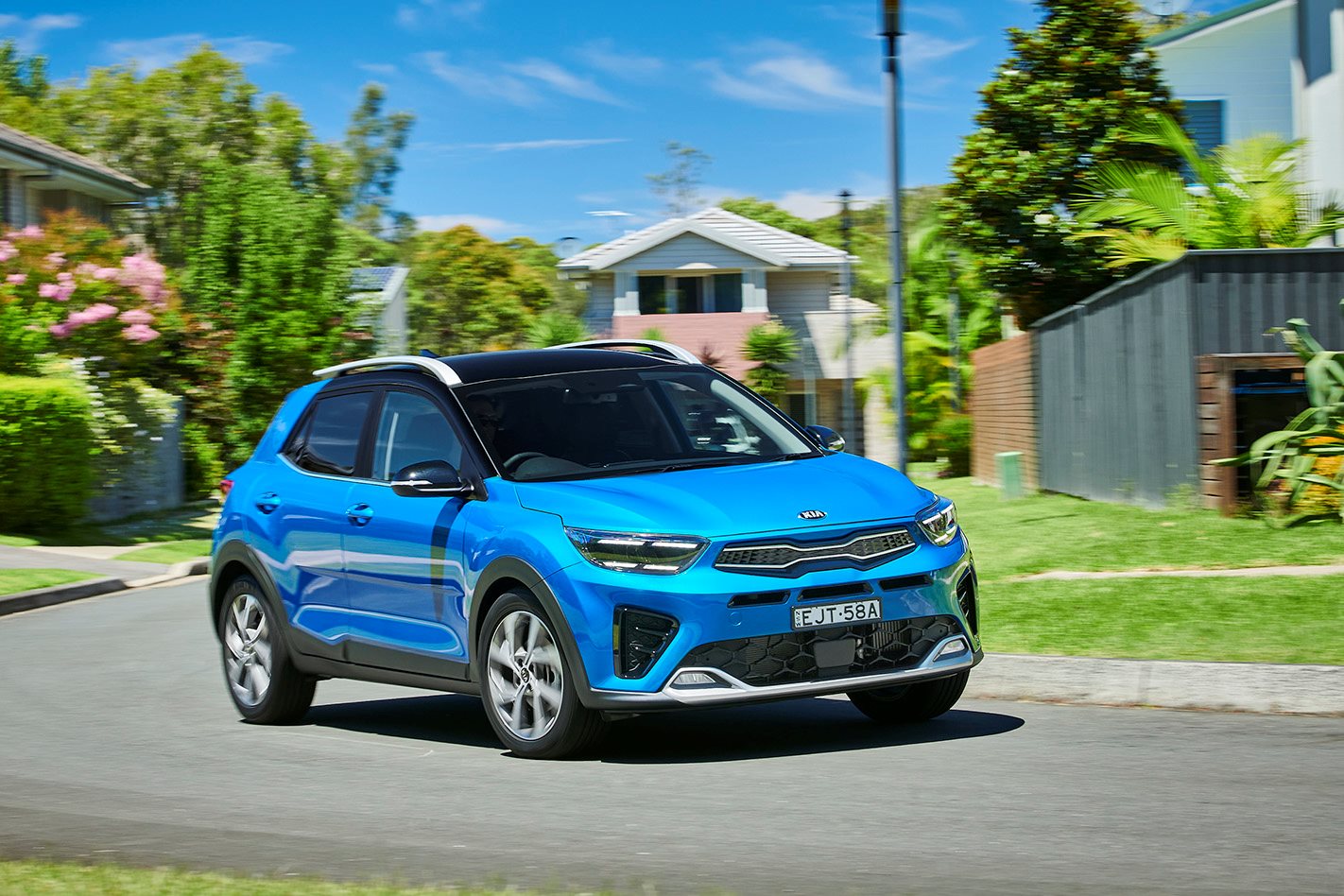Things we like
- Looks, features, active safety, punchy turbo option, boot space
Not so much
- Wireless Apple CarPlay only in base variant
Don’t be fooled by the ‘all-new’ tag given to Kia’s latest addition to its Australian range. The Stonic has actually been available overseas since 2017.
However, it recently underwent a significant mid-life facelift and has been dispatched Down Under with everything you’d expect from any new small Kia – and some.
Priced from $21,490, the Stonic range matches that of the Kia Rio on which it’s based, with entry-level S, mid-grade Sport and top GT-Line versions.

It also shares the Rio’s engines, with the S and Sport powered by the 74kW/133Nm 1.4-litre four-cylinder petrol engine, with a choice of six-speed manual or six-speed auto.
The sportier GT-Line, meanwhile, is equipped with a punchy little 1.0-litre three-pot turbo that’s coupled with a seven-speed dual-clutch auto.
It also produces 74kW but dishes out 172Nm of torque from as low as 1500rpm..
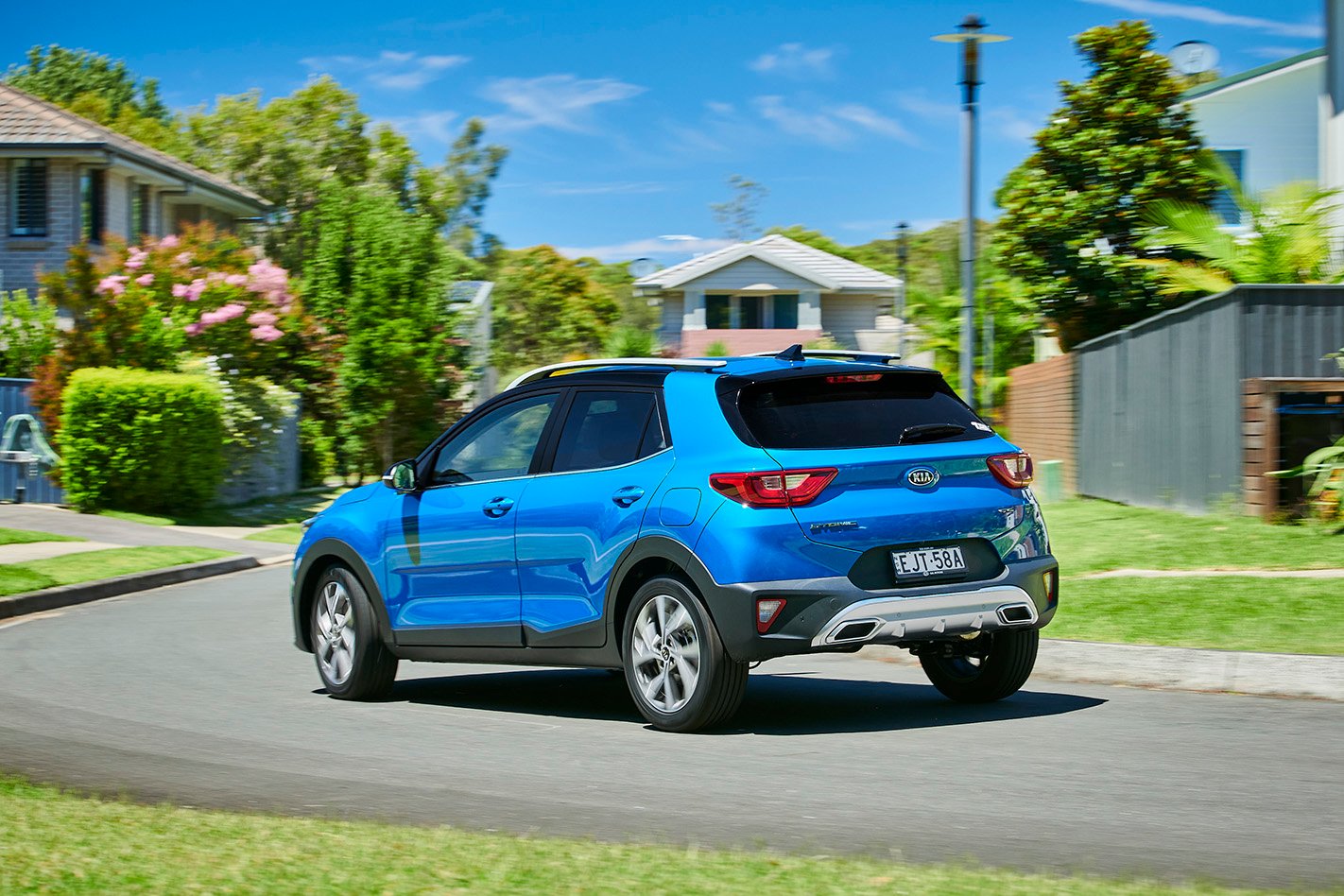
How does the Kia Stonic GT-Line drive?
As we discovered with the Rio GT-Line, this is a lively powertrain that offers up a bit of fun. In its native urban environment, it fulfils its mission as a zippy and practical runabout well
It steers nicely, helped by Kia’s engineers doubling the number of teeth on the serrated steering column shaft, resulting in the tiller feeling more responsive and direct without being too light.
This helps with negotiating tight spots while feeling composed out of town.
On the open road, the GT-Line benefits from having three driving modes – ECO, Comfort and Sport- which alters the DCT’s rev-mapping.
At speed, the Normal mode can feel a little sluggish, but selecting Sport perks things up a bit by allowing the revs to increase to 6000rpm between ‘up-shifts’.

It’s not incredibly quick – 0-100 km/h is about just shy of 11 seconds – but it does give you a nice push along at mid-revs which makes accelerating out of bends rather enjoyable.
The suspension has been tuned to Australian conditions, and the torsion beam rear set up is more upright than the Rio’s – fitted 8.4 degrees off vertical as opposed to the hatch’s 25 degrees, which allows the rear end to compress and extend more freely.
This has made for a very good balance between dynamic handling and ride comfort on the biggish 17-inch alloys that are fitted with 205/55 R17 Continental ContiPremium rubber.
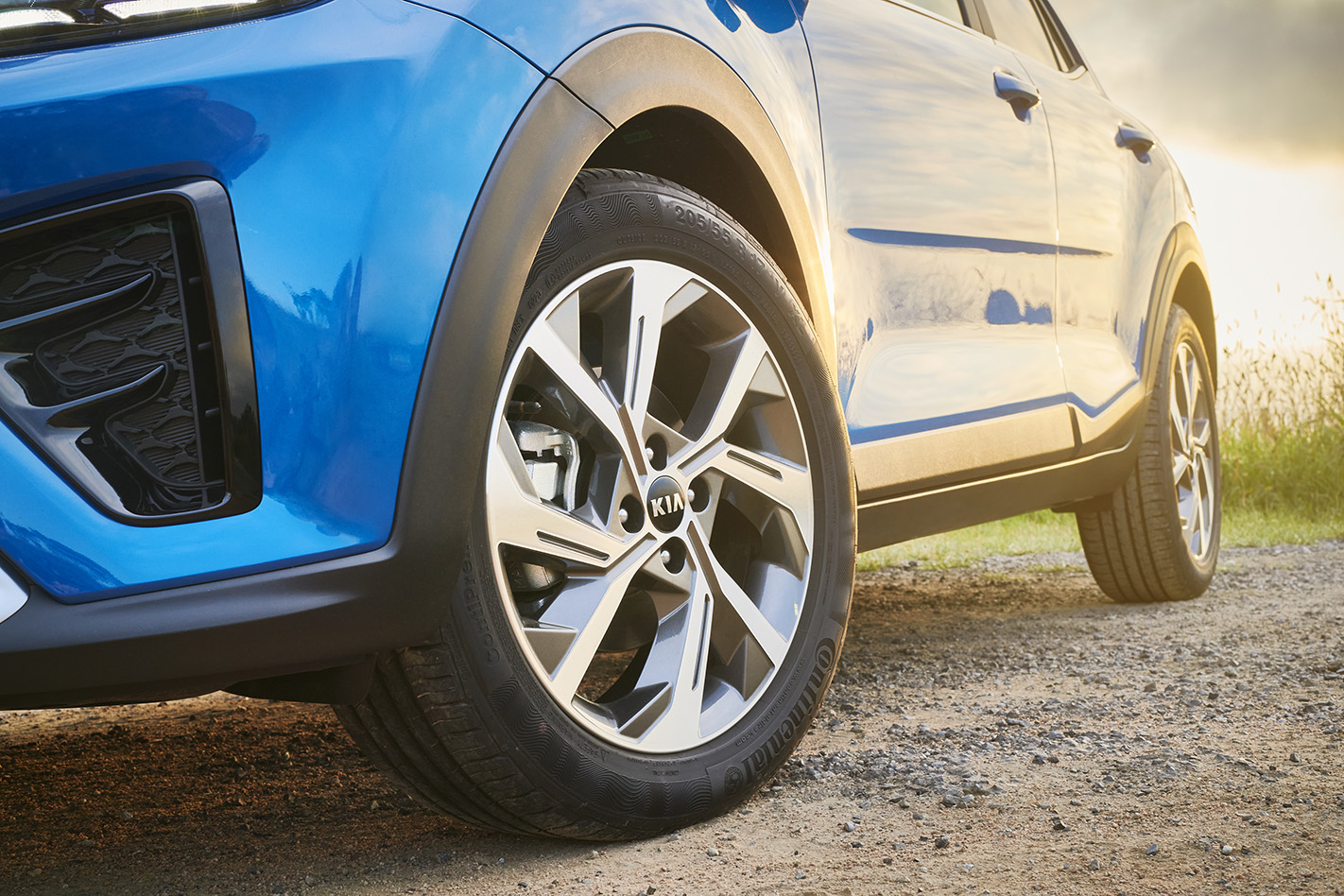
It doesn’t exactly glide over road imperfections, but it feels composed, and it takes a decent sized pot-hole to feel any jarring.
This was a smart move by Kia. It would have been tempting to stiffen the GT-Line’s dampers to go the badge – like it did with the Rio – but to do that would be to wrongly assume why people are attracted to crossovers like this.
So what will attract buyers to the Stonic over the similar but less-expensive Rio and rivals such as the segment-leading Mazda CX-3, cheap and cheerful Hyundai Venue and the Toyota Yaris Cross with its optional hybrid powertrain?
Well, the Stonic is a looker. Unlike some light SUVs designs that rely on quirkiness to stand out, the Stonic is rather handsome with a broad appeal extends beyond its youthful target market.
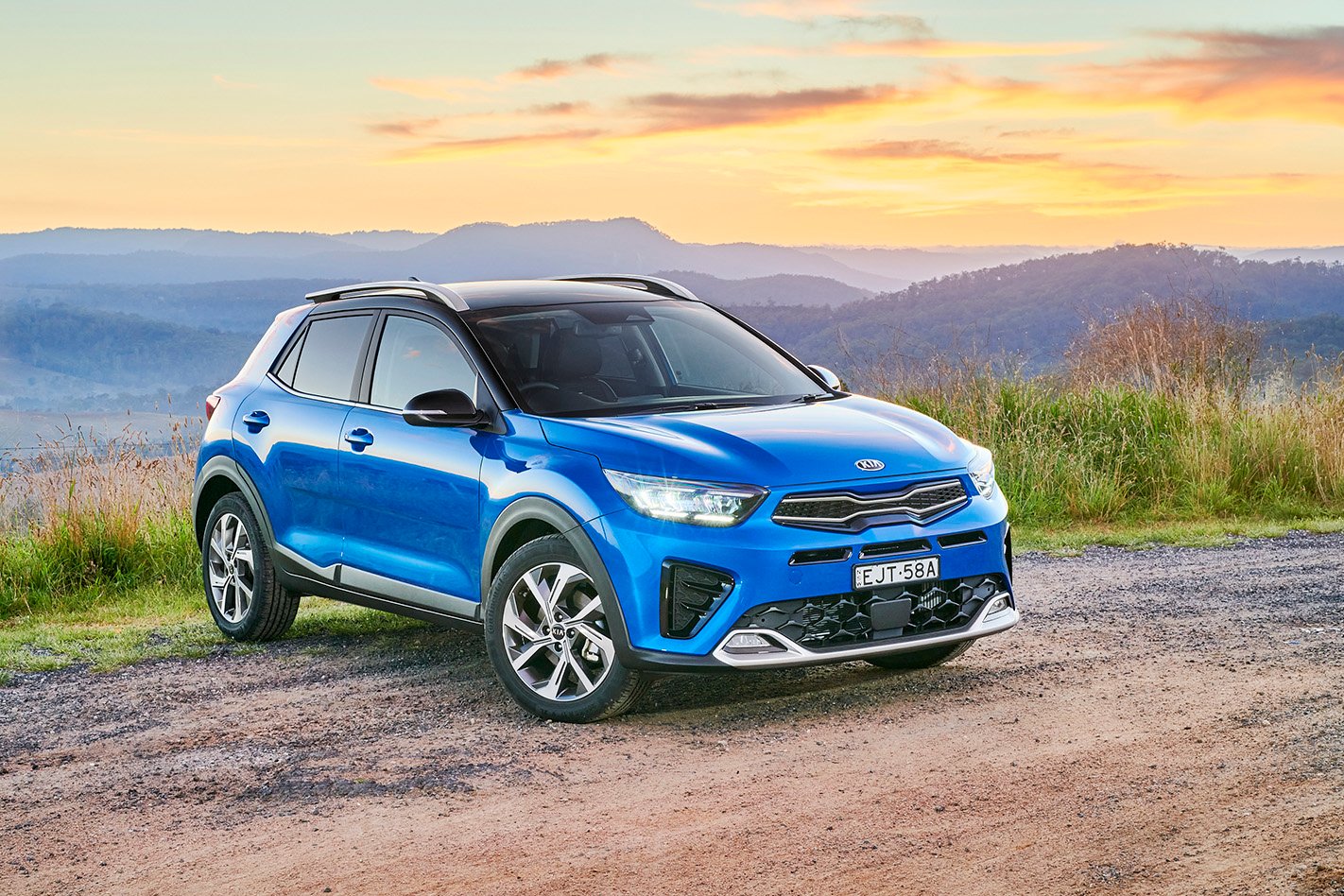
Kia’s designers have done well to make it look like an SUV rather than a high-riding hatchback, with its bold wheel-arch surrounds, thick C-pillar and silver-painted rear diffuser and scuff plate.
That said, it still has a sleek profile that should make CX-3 buyers take a second look.
The GT-Line gains a little more garnish to make its front look a little more aggressive including a chrome-trimmed Tiger grille and silver-lower bumper plus sharper-looking LED bi-function headlamps, LED daytime running lamps and LED strip fog-lamps.
Step inside and the attractive cabin is where you’ll find the most similarities to the Rio.
Living with the Kia Stonic
The interiors are the same size and virtually identical, though the Stonic’s dashboard has been raised a little for more knee room and the centre console doesn’t protrude as far back to make it easier to slide across the rear bench.

Like the Rio, the cabin is well put together well but there are the usual hard plastics on the doors.
Each Stonic version has an 8.0-inch infotainment system that can sync to two phones via Bluetooth, which allows one person to use theirs for music while the other takes calls.
There is the now-usual Apple CarPlay and Android connectivity too.
The good news there is the Stonic is one of the few cars to have wireless Apple CarPlay – the bad news is it is only available in the entry-level Stonic S but not yet on the pricier Sport or GT-Line.
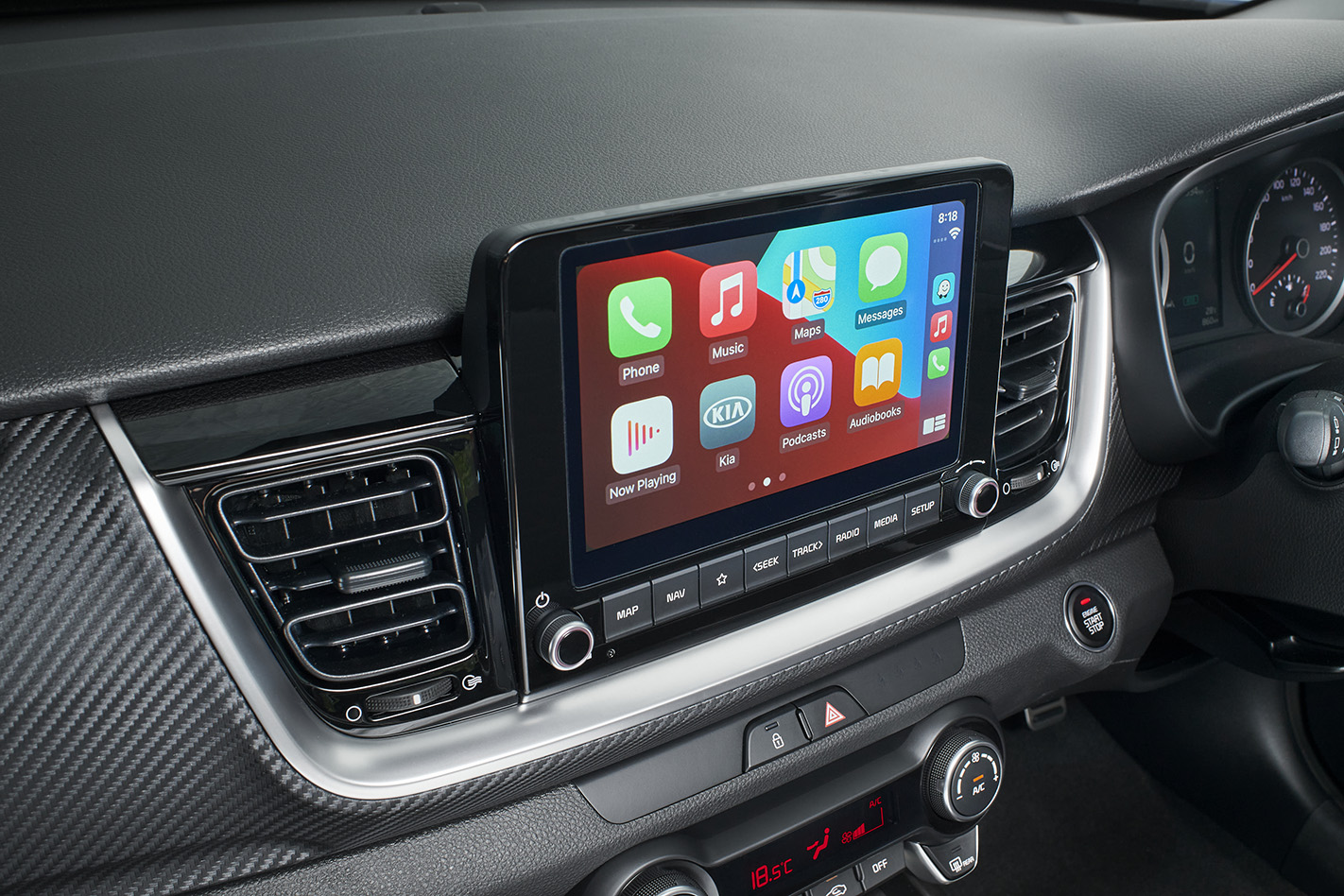
Kia says this is because those variants have in-built satellite navigation with 10-year Mapcare and SUNA traffic services support, though there’s also talk of some kind of licensing issue with a certain phone manufacturer.
The front seats are comfortable, particularly the GT-Line’s which have a soft but supportive backrest and good hip bolstering.
The driver’s seat only had basic manual settings, but I found it easy enough to find a good driving position.
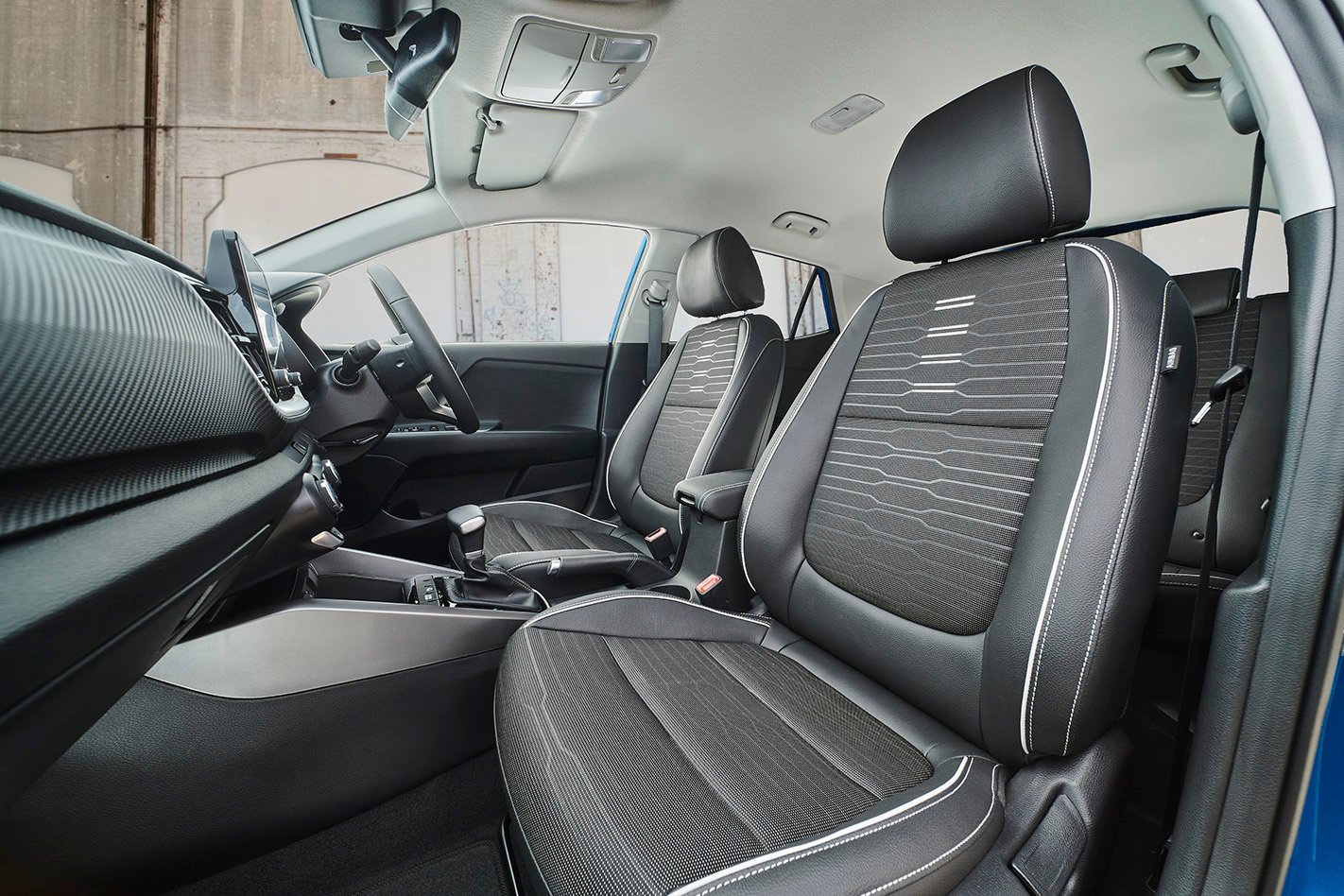
The rear seats offer reasonable legroom for a car this size as long as those in front aren’t too tall. It feels a little airier back there than in the CX-3 with the raised bench providing good forward and side vision.
There’s a 353-litre boot, which is 28 litres bigger than the Rio’s, 91 litres bigger than the CX-3’s and just two litres shy of the Venue’s.
Putting both 60/40 split/fold seats down means you can fit up to 1155 litres of stuff.
The boot space itself has a deep floor due to only having to fit a space-saver spare wheel underneath.
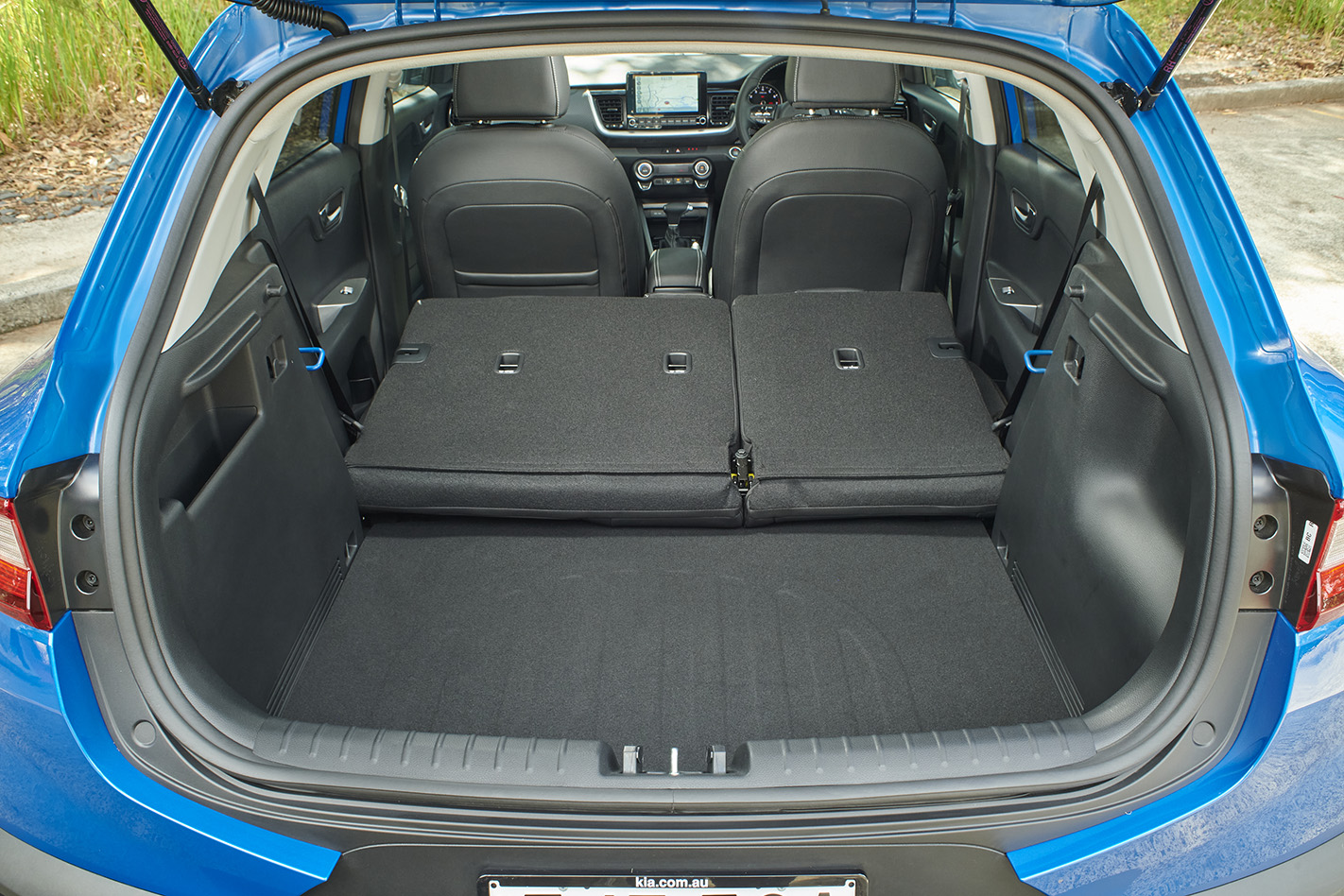
Safety
Safety-wise, each version comes with a driver assistance suite that includes autonomous emergency braking with pedestrian and cyclist detection that works to prevent or mitigate a collision at speeds up to 180km/h; lane keep assist; lane following assist; driver attention alert, and leading vehicle departure alert that gives you a hoy when the car in front of you drives off from the lights while you’re daydreaming.
Interestingly, it has a five-star ANCAP safety rating from 2017 that was achieved by technically being a variant of the Kia Rio.
This only applies to the 1.4-litre S and Sport variants as it predated the introduction of the three-cylinder turbo to the range.
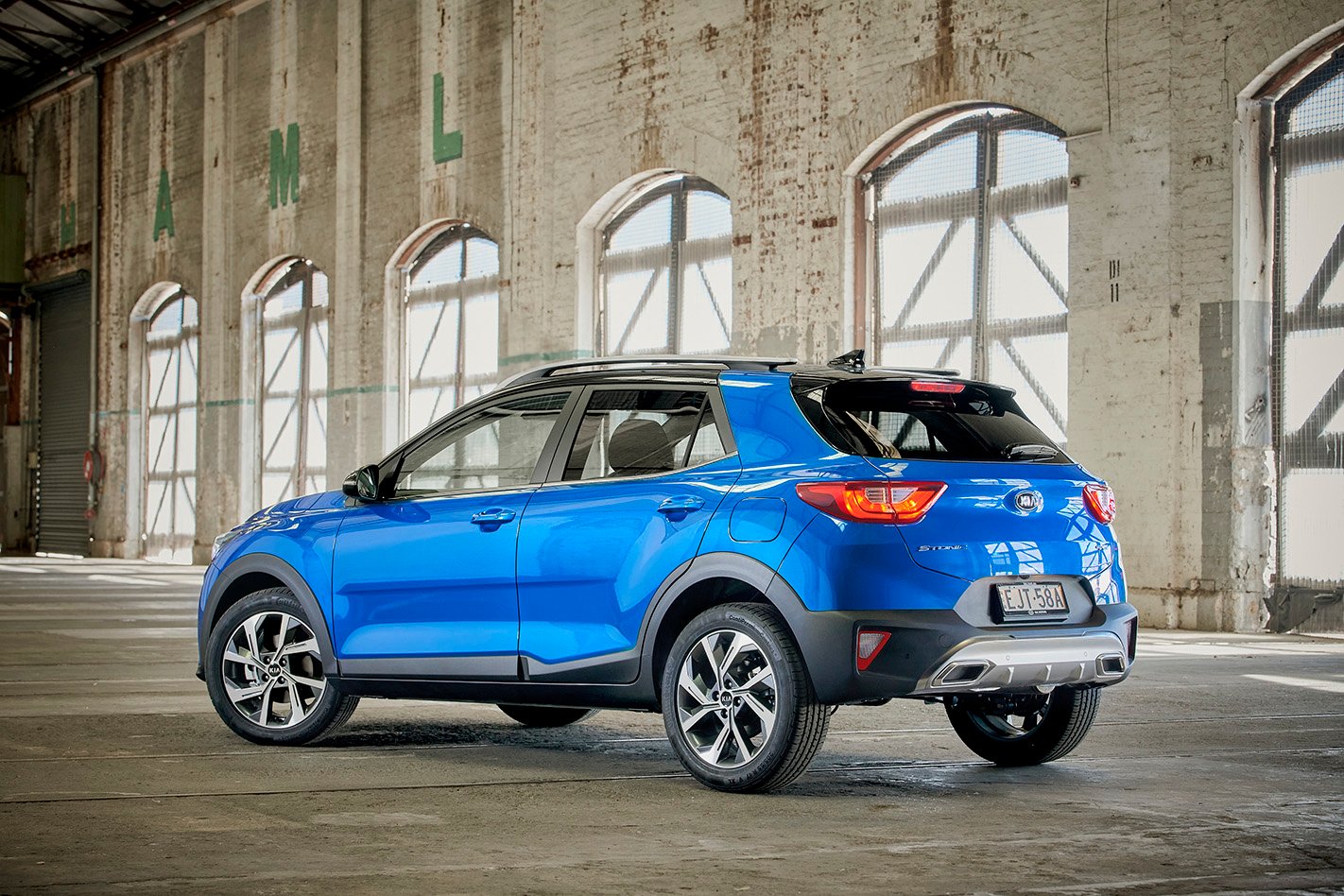
How much is the Kia Stonic?
It doesn’t do too badly in terms of value, with the $21,490 entry-level pricing sitting between the Venue and CX-3 and each variant scoring sharp driveaway pricing that takes the S manual and auto prices to $22,990 and $23,990 respectively.
The Sport and GT-Line versions have no mark-up between their retail and driveaway price, with the Sport manual and auto costing $24,990 and $25,990 and the GT-Line $29,990.
Interestingly, while Kia Australia expects all three versions to sell in similar numbers, it expects sales to slightly favour the range-topper.
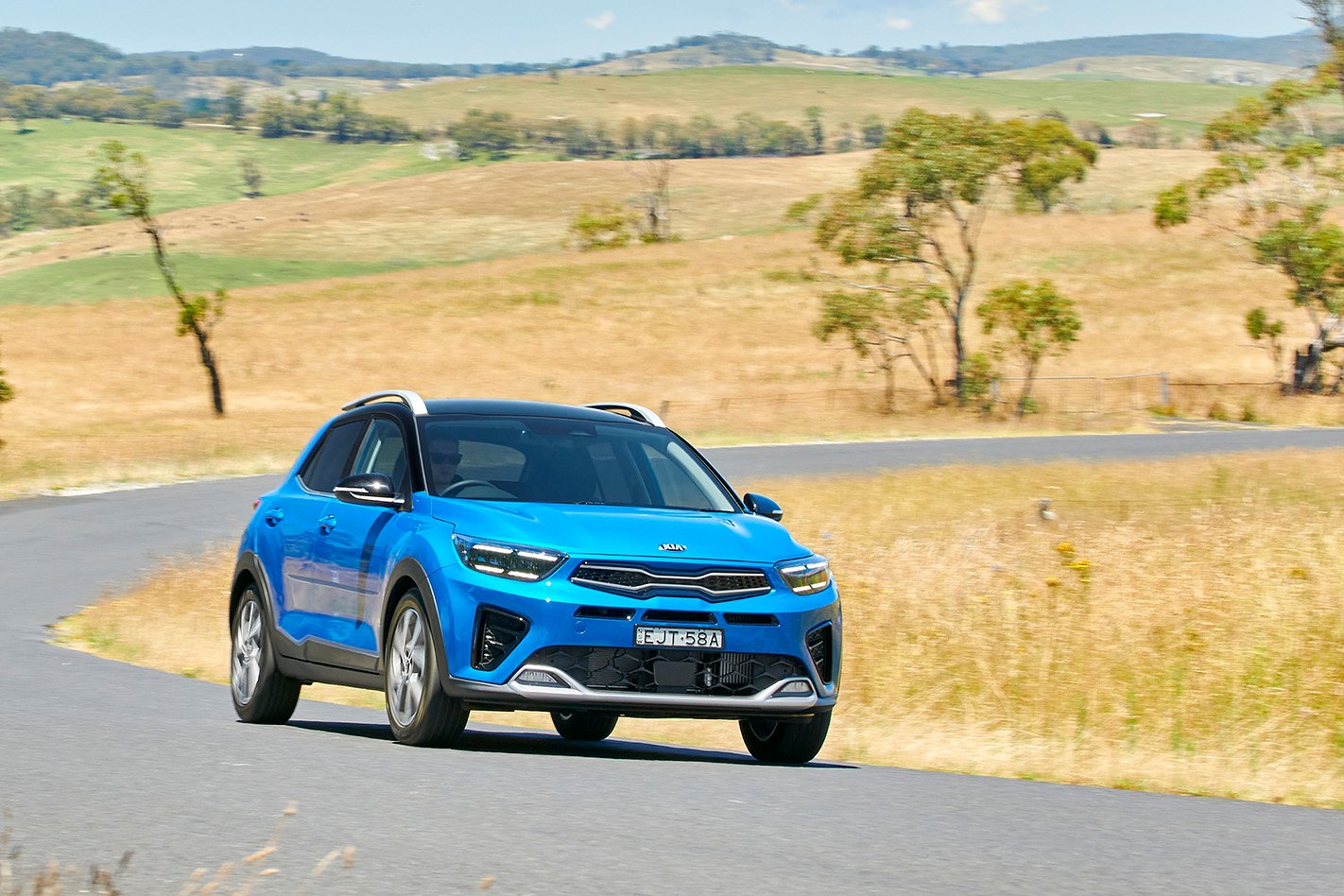
VERDICT
So is all that enough to knock the CX-3 off its perch? Probably not – the Mazda, which has been the leading crossover since before they became cool, has a much broader range with a bunch of upmarket features as well as AWD options.
But unlike the Rio, whose current model never quite lived up to expectations, expect the Stonic to make its presence felt, both in the Kia line-up and the ever-growing light SUV segment.
RATING
4/5 stars
KIA Stonic rivals
Mazda CX-3, Hyundai Venue, Toyota Yaris Cross, Ford Puma, Suzuki Ignis
KIA Stonic specs
- Model Kia Stonic GT-Line
- Engine 998cc 3cyl, dohc,12v turbo
- Max power 74kW @ 4500-6500rpm
- Max torque 172Nm @ 1500-4500rpm
- Transmission 7-speed dual-clutch auto
- Weight 1227kg
- 0-100km/h 10.7sec (estimated)
- Economy 5.4L/100km
- Price $29,990
- On sale Now
Things we like
- Looks, features, active safety, punchy turbo option, boot space
Not so much
- Wireless Apple CarPlay only in base variant


